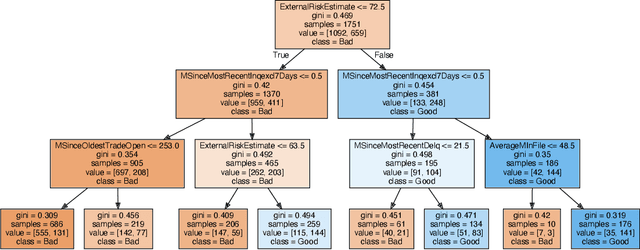Ismael Lemhadri
RbX: Region-based explanations of prediction models
Oct 17, 2022



Abstract:We introduce region-based explanations (RbX), a novel, model-agnostic method to generate local explanations of scalar outputs from a black-box prediction model using only query access. RbX is based on a greedy algorithm for building a convex polytope that approximates a region of feature space where model predictions are close to the prediction at some target point. This region is fully specified by the user on the scale of the predictions, rather than on the scale of the features. The geometry of this polytope - specifically the change in each coordinate necessary to escape the polytope - quantifies the local sensitivity of the predictions to each of the features. These "escape distances" can then be standardized to rank the features by local importance. RbX is guaranteed to satisfy a "sparsity axiom," which requires that features which do not enter into the prediction model are assigned zero importance. At the same time, real data examples and synthetic experiments show how RbX can more readily detect all locally relevant features than existing methods.
A neural network with feature sparsity
Sep 05, 2019



Abstract:We propose a neural network model, with a separate linear (residual) term, that explicitly bounds the input layer weights for a feature by the linear weight for that feature. The model can be seen as a modification of so-called residual neural networks to produce a path of models that are feature-sparse, that is, use only a subset of the features. This is analogous to the solution path from the usual Lasso ($\ell_1$-regularized) linear regression. We call the proposed procedure "LassoNet" and develop a projected proximal gradient algorithm for its optimization. This approach can sometimes give as low or lower test error than a standard neural network, and its feature selection provides more interpretable solutions. We illustrate the method using both simulated and real data examples, and show that it is often able to achieve competitive performance with a much smaller number of input features.
 Add to Chrome
Add to Chrome Add to Firefox
Add to Firefox Add to Edge
Add to Edge